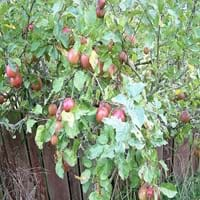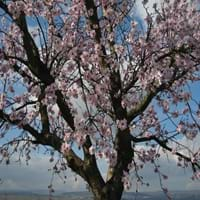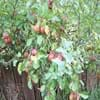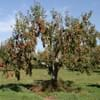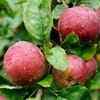Life Span
Perennial
Perennial
Origin
Eastern Europe, Southern Europe, Russia/Siberia, Southern Asia, Western Asia
Northern Africa, Western Asia
Types
Not available
Bitter Almonds, Chinese Almonds, Green Almonds
Habitat
Hillside, Mountain Slopes, Temperate Regions
Dappled Shade, Sunny Edge, Woodland Garden Secondary
USDA Hardiness Zone
4-8
5-8
Sunset Zone
2a, 2b, 3a, 3b, 7
2b, 3b, 8, 9, 10, 12, 13, 14, 15, 16, 19, 20, 21
Habit
Oval or Rounded
Oval or Rounded
Flower Color
White, Rose
White, Light Pink
Flower Color Modifier
Bicolor
Bicolor
Fruit Color
Yellow, Red
Green
Leaf Color in Spring
Green
Light Green
Leaf Color in Summer
Green
Light Green
Leaf Color in Fall
Green, Light Yellow, Brown
Light Green, Yellow green
Leaf Color in Winter
Light Green
Light Green
Leaf Shape
Oblong
Egg-shaped
Plant Season
Spring, Fall
Spring, Fall
Sunlight
Full Sun, Partial Sun, Partial shade
Full Sun
Growth Rate
Medium
Medium
Type of Soil
Clay, Loam
Loam, Sand
The pH of Soil
Acidic, Neutral
Neutral
Soil Drainage
Well drained
Well drained
Bloom Time
Early Spring, Spring
Early Spring, Spring, Late Winter
Tolerances
Drought
Drought
Where to Plant?
Ground
Container
How to Plant?
Grafting, Seedlings, Transplanting
Budding, Grafting
Plant Maintenance
Medium
Medium
Watering Requirements
Medium
Do Not over Water, Water Deeply
In Summer
Lots of watering
Lots of watering
In Spring
Moderate
Moderate
In Winter
Average Water
Average Water
Soil pH
Acidic, Neutral
Neutral
Soil Type
Clay, Loam
Loam, Sand
Soil Drainage Capacity
Well drained
Well drained
Sun Exposure
Full Sun, Partial Sun, Partial shade
Full Sun
Pruning
Remove damaged leaves, Remove dead branches, Remove dead leaves
Heading cuts, Remove damaged leaves, Remove dead branches, Remove dead leaves, Thinning
Fertilizers
All-Purpose Liquid Fertilizer
Apply 12-12-12 amounts
Pests and Diseases
Black rot, Leaf spot, Scab
Almond brownline and decline, Almond kernel shrivel, Alternaria Leaf Spot, Hull rot
Plant Tolerance
Drought
Drought
Flower Petal Number
Single
Not Available
Foliage Texture
Medium
Medium
Foliage Sheen
Matte
Matte
Allergy
Mouth itching, Throat itching
Diarrhea, Mild Allergen, Nausea, Swelling in mouth
Aesthetic Uses
Not Used For Aesthetic Purpose
Beautification
Beauty Benefits
Not Available
Acne, Blackheads, Good for skin, Moisturizing, Prevents greying of hair
Environmental Uses
Air purification
Air purification
Medicinal Uses
Cancer, constipation, Diabetes, Diarrhea, Dysentry, Fever, Heart problems, Tooth ache
Antiemetic, Antitumor, Emollient, Nutritive, Pectoral
Part of Plant Used
Fruits
Seeds, Stem
Other Uses
Used As Food, Wood is used for making furniture
Blended with water to make almond milk, Oil is used for aromatherapy, Used for making dark grey to green dye, Used for producing cooking oil
Used As Indoor Plant
No
No
Used As Outdoor Plant
Yes
Yes
Garden Design
Edible, Feature Plant, Fruit / Fruit Tree
Edible, Fruit / Fruit Tree
Botanical Name
MALUS domestica 'Jonathan'
PRUNUS dulcis
Common Name
Apple, Eating Apple, Jonathan Apple
Almond, Sweet Almond
In Hindi
जोनाथन सेब
मीठा बादाम
In German
Jonathan (Apfel)
Süße Mandel
In French
Jonathan (pomme)
Amande douce
In Spanish
Jonathan manzana
Almendra dulce
In Greek
Jonathan μήλο
Sweet Almond
In Portuguese
Jonathan maçã
Amêndoas doces
In Polish
Jonatan (jabłko)
słodkich migdałów
In Latin
Apple Ionathan
Almond Pulchra
Phylum
Magnoliophyta
Magnoliophyta
Class
Magnoliopsida
Magnoliopsida
Clade
Angiosperms, Eudicots, Rosids
Angiosperms, Eudicots, Rosids
Tribe
Not Available
Amygdaleae
Subfamily
Not Available
Amygdaloideae
Number of Species
Not Available
Not Available
Season and Care of Jonathan Apple and Sweet Almond
Season and care of Jonathan Apple and Sweet Almond is important to know. While considering everything about Jonathan Apple and Sweet Almond Care, growing season is an essential factor. Jonathan Apple season is Spring and Fall and Sweet Almond season is Spring and Fall. The type of soil for Jonathan Apple is Clay, Loam and for Sweet Almond is Loam, Sand while the PH of soil for Jonathan Apple is Acidic, Neutral and for Sweet Almond is Neutral.
Jonathan Apple and Sweet Almond Physical Information
Jonathan Apple and Sweet Almond physical information is very important for comparison. Jonathan Apple height is 460.00 cm and width 460.00 cm whereas Sweet Almond height is 760.00 cm and width 760.00 cm. The color specification of Jonathan Apple and Sweet Almond are as follows:
Jonathan Apple flower color: White and Rose
Jonathan Apple leaf color: Green
Sweet Almond flower color: White and Light Pink
- Sweet Almond leaf color: Light Green
Care of Jonathan Apple and Sweet Almond
Care of Jonathan Apple and Sweet Almond include pruning, fertilizers, watering etc. Jonathan Apple pruning is done Remove damaged leaves, Remove dead branches and Remove dead leaves and Sweet Almond pruning is done Heading cuts, Remove damaged leaves, Remove dead branches, Remove dead leaves and Thinning. In summer Jonathan Apple needs Lots of watering and in winter, it needs Average Water. Whereas, in summer Sweet Almond needs Lots of watering and in winter, it needs Average Water.
